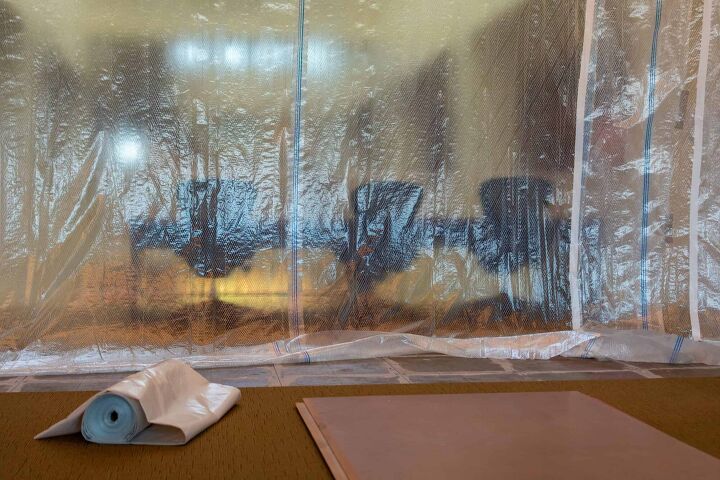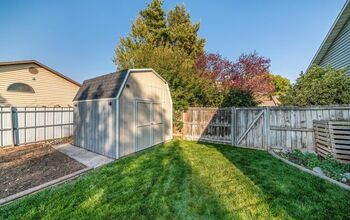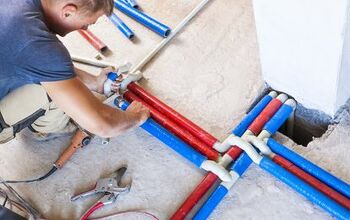What Are ZipWall Alternatives? (We Have The Answer)

If there’s one pet peeve most DIY enthusiasts can’t stand, it’s having to clean up piles of dust from every corner of their room after a project. It’s a pain, and it’s something that engineers have been working tirelessly to curb. At one point, they found a solution. They call it ZipWall, and it’s a zip-up dust barrier that prevents dust from escaping from a work zone. It’s also pricey, so what alternatives do you have?
ZipWall has a relative stronghold on the market when it comes to dust barriers, and for good reason. Their products are excellent quality and they help contain sawdust and other materials to a specified work zone. However, there are other alternatives that you can look into, including a DIY approach and the 3rd Hand Magnetic Dust Barrier system.
Admittedly, it’s going to be tough to find an alternative for a ZipWall system. Even though ZipWall basically has a monopoly on the market, there are still ways for you to get the kind of dust protection that this product affords you.
What Is A ZipWall?
A ZipWall is a specialized containment system that uses stretched sheets of plastic to contain everything from dust to fumes in one small area. As the name suggests, the system has a zip-up entry that allows workers to enter in and out of the work area while keeping the overall area closed to the world.
How Do ZipWalls Work?
With a ZipWall setup, you get a bunch of poles that twist and lock into place, plus spring clips. You get to use the poles to create a boxed-off area. From there, you get to clip your plastic sheeting over the area. If you choose to get ZipWall zippers, you can glue them to your tarp, canvas, or plastic wrap. This gives you a zippable seal to your containment area.
Of course, it’s important to remember that you will still need to have some breathing room…and that you should still wear protective gear like masks to avoid inhaling any dust while you’re in the containment zone. While ZipWalls can reduce dust, it’s still a safety matter you should worry about.
Are ZipWalls Effective?
For the most part, they are as effective as you make them be. If you seal off everything from the floor up to the ceiling, you’ll have a lot less dust to clean up. Even so, there’s only so much protection that they can offer. People hoping for a complete system for every nook and cranny to remain dust-free will be disappointed.
How Much Do ZipWalls Cost?
The price of your ZipWall enclosure isn’t easy to calculate. ZipWall’s brand works by offering a wide range of different products that can be mixed and matched together to create a custom enclosure. It’s also possible to get a ZipWall put up with items that don’t necessarily belong to the ZipWall brand. So, it’s hard to estimate how much your particular zone will cost.
With that said, there are some costs that you can be aware of. Four adjustable ZipWall poles will cost around $169. A fully-functional ZipWall door barrier kit can cost as much as $269. Needless to say, the price of a ZipWall containment zone can easily become a budgetary issue.
What ZipWall Alternatives Are There?
ZipWall made an entire industry out of its invention, and that’s no joke. However, there are three other ways you can get a containment system close to ZipWall without actually getting a ZipWall. Those options are to use a Magnetic Dust Barrier, buy a Surface Shields kit, or to make your own ZipWall-like invention.
One company by the name of 3rd Hand managed to make a ZipWall alternative that uses magnetic power to get the walls of a containment center to “snap” in place. Much like ZipWall, the kit comes with lock-in poles and clamps that can help secure the plastic sheeting in place. It’s reusable, lightweight, and can even be “zipped” using magnetic closures.
A full kit with everything that you need to get started will cost between $219 and $241. If you just need a door barrier, it will be around $110. That’s not too bad, but trying to find a kit for sale online can be a bit of a hassle.
Another one of the offerings to make it on the market comes from the company Surface Shields. And, it’s a lot like what ZipWall and Magnetic Dust Barriers behave like. The Surface Shields kit comes with four adjustable dust shield poles, two “Zip n’ Close” red zippers for easy access, and a carrying kit. All you have to do is add the plastic sheeting to complete the setup.
This is as close to a ZipWall alternative as you’ll find on the market, and the price reflects that. A full kit will cost around $260. This is fairly on par with ZipWall, depending on what kit you choose.
Making Your Own ZipWall
You do not have to order the poles and clamps from ZipWall to create your own containment system. You can do it pretty easily through a variety of different methods. The most common methods include:
- You can use cut PVC pipes to create your own containment space. Clamp your plastic sheeting to a structure made from thin PVC pipes, and you’ll be able to create your own mini-room for all your project messes.
- You can also just hang plastic sheeting off doors. If you’re just concerned about dust spreading to other rooms, hanging plastic sheeting from the ceiling or doors will be enough to contain most of it. Just secure the sheeting at the bottom with some tape or some stones.
- Consider creating a pop-up tent outside. If you just need to contain dust from cutting wood, a pop-up tend outdoors might be the best option for you. It also might just be a good idea to do your cutting outside, if you want to just let the sawdust spread over your yard. Some people are okay with that, after all.
Can You Rent A ZipWall?
Another option that you might want to consider is renting a containment zone. If you’re lucky to live in the right area, you might be able to find a rental company that will lend you a ZipWall for the duration of your project. Most rental companies will have a maximum amount of days and will charge a daily fee. Even so, it could potentially be a cheaper way to get the containment that you want.
Related Questions
Is it important to reduce dust during a renovation project?
With most projects, having too much dust could pose a serious health hazard, not to mention a major cleanup hassle. Experts agree that it’s just good practice to try to limit the spread of dust during any project. If this includes adding a ZipWall, looking into specialized air filters, getting your area regularly vacuumed, or going so far as getting a solid wall barrier, so be it.
How do you clean up dust after a renovation?
A ShopVac can come in handy, but there’s more to the process than just vacuuming the area alone. Vacuum your upholstery, carpets, and electronics. Wipe down surfaces, replace your air filters, and clean out your vents, too. You need to remember that most renovation dust goes airborne. This, in turn, makes it go everywhere.
Is renovation dust harmful?
Renovation dust, much like any other type of dust, poses a health risk to people. Healthy people might notice some lung irritation from excessive dust in the air. If you have a preexisting condition like asthma, allergies, or COPD, you may notice more serious side effects from inhaling renovation dust.
Can drywall dust kill you?
Believe it or not, yes. Drywall dust contains toxic ingredients that can pose a serious risk to your lungs if inhaled for long periods of time. If left for very long periods of time, you may start to develop lethal lung diseases such as lung cancer. If at all possible, try to limit your exposure to drywall dust and use a respirator whenever you need to work with drywall.

Ossiana Tepfenhart is an expert writer, focusing on interior design and general home tips. Writing is her life, and it's what she does best. Her interests include art and real estate investments.
More by Ossiana Tepfenhart



























